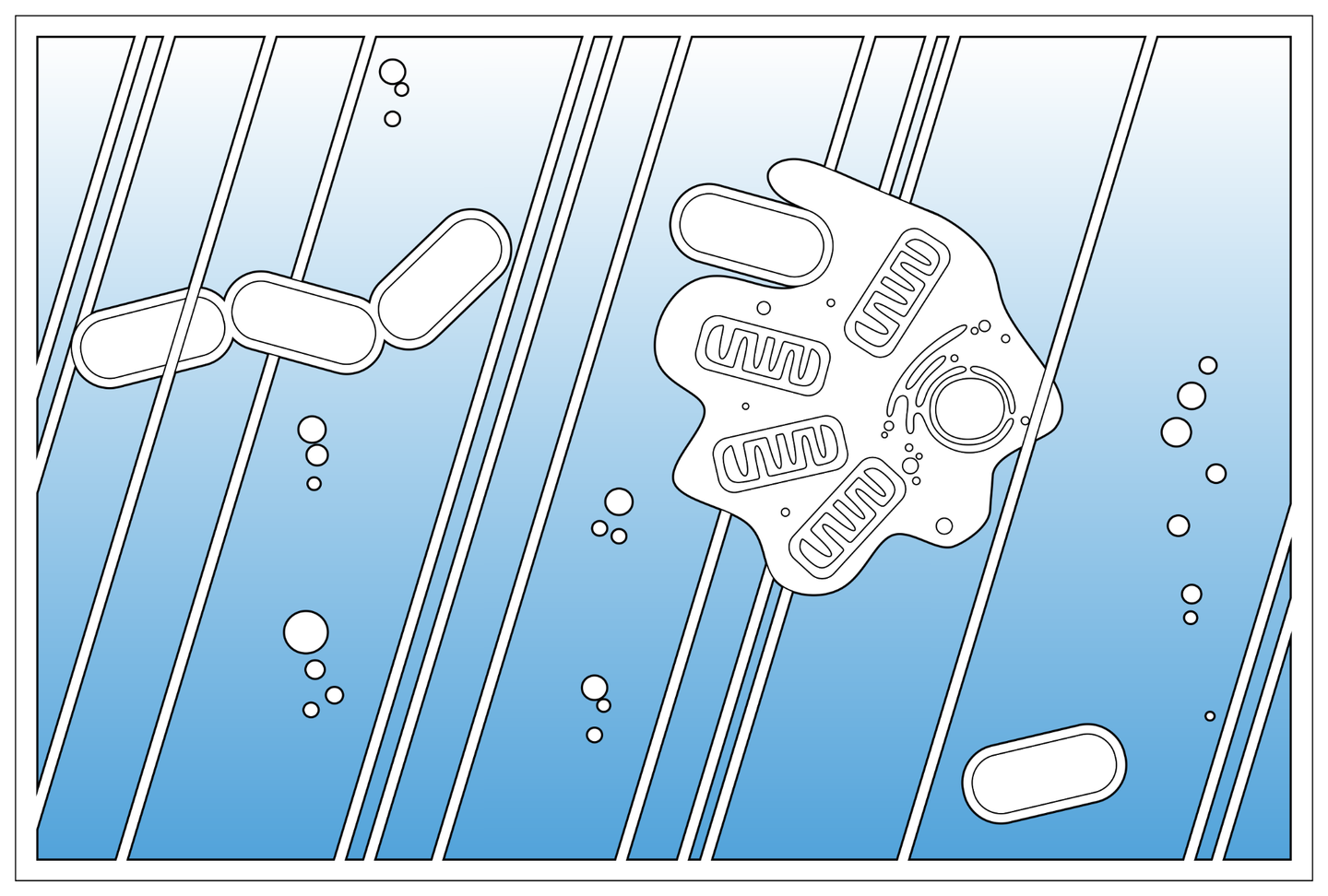Gray hair may be a natural defense against cancer, study finds
New study reveals how skin stem cells face two fates—graying or cancer—depending on the damage they endure and signals from their environment.

The same type of skin stem cell can either fade hair color or trigger skin cancer. (CREDIT: Shutterstock)
In a discovery that ties the biology of aging to cancer risk, scientists from the University of Tokyo have found that the same type of skin stem cell can either fade hair color or trigger skin cancer—depending on the kind of damage it experiences. The findings reveal how the body’s microscopic stress responses can shape both aging and disease.
The Stem Cells that Give Hair Its Color
Hair color is derived from pigment-producing cells known as melanocytes, which develop from melanocyte stem cells in the bulge region of each hair follicle. With age, these cells tend to decrease, leading to gray or white hair. Occasionally, though, they remain and mutate, with a higher risk of melanoma, a potentially fatal skin cancer.
Scientists had long known that loss of McSC causes hair graying. What scientists wanted to know was why some stem cells vanish harmlessly and others live long enough to become deadly. The researchers, led by Professor Emi Nishimura and Assistant Professor Yasuaki Mohri, traced the tip to how these cells react to damage and to the chemical messages they get from nearby cells, which are known as their "niche."
Two Types of Cellular Damage
The researchers exposed McSCs in the mice to two stresses: DNA double-strand breaks (DSBs)—a negative form of genomic injury—and carcinogens such as ultraviolet B light or the chemical DMBA. When DSBs were induced, the stem cells activated a built-in safety mechanism called senescence-coupled differentiation.
Involving the p53–p21 pathway, the mechanism keeps defective stem cells from self-renewal. Instead, they grow into pigment cells and ultimately are lost. The end is hair graying, but the cost is protection—those beaten cells can't become cancerous any more.
All of this changed when carcinogens were added to the mixture. Even though there was DNA damage, the carcinogens prevented McSCs from dwindling. Instead, a survival circuit took over. A metabolic pathway that was fueled by arachidonic acid and a signaling molecule called KIT ligand (KITL), produced by neighboring skin cells, encouraged the damaged stem cells to keep dividing. That persistence, useful as it was for maintaining pigmentation, made the cells more likely to turn into melanoma.
Observing McSCs Make Their Choice
By using long-term imaging in mice, Nishimura's researchers monitored behavior of McSC in real-time. Juvenile mice had healthy stores of stem cells that restored color at each growth cycle. Older mice had run out most of these cells, illustrating how depletion makes hair follicles age.
When DSB-inducing radiation was applied to the animals, McSC numbers plummeted, mimicking premature graying. But in the mice, which had also been treated with carcinogens, the cell loss expected in response to the radiation essentially was not there—the carcinogens had overruled the protective reduction response. Molecular analyses revealed that the surviving cells had triggered arachidonic acid metabolism, and that KITL levels in nearby epidermis increased.
When KITL was removed from the system, damaged McSCs were lost and graying of hair recurred. Administering supplemental KITL reversed this loss, showing how niche signals can dictate cell survival and death.
One Cell, Two Fates
The results refer to an intriguing duality. One of the stem cell populations can branch out in two directions: exhaustion, causing visible aging but being protective against cancer, or persistence, preserving pigmentation but being vulnerable to melanoma.
As Nishimura explained, "The same stem cell population can follow antagonistic fates—exhaustion or expansion—depending on the type of stress and microenvironmental signals."
This suggests that graying hair and melanoma are not separate events, but collateral branches of the same biological decision tree. One branches off in the direction of security at the cost of youth; the other preserves vigor at the cost of stability.
Aging, Protection, and Risk
While the implication that graying may be protective against cancer is bordering on the poetic, the researchers warn against oversimplifying the association. It is not hair color that determines cancer risk but rather the body's mechanism to remove damaged stem cells. It's a reminder of how processes of aging such as graying are actually defense mechanisms in and of themselves and not just precursors to decline.
At the same time, disrupting that process could have the opposite consequence. Trying to salvage or revive pigment-producing stem cells might retain healthy young hair but inadvertently encourage the survival of cells that contain dangerous mutations. Any therapy of McSCs will need to be an artful balancing act between delaying aging and avoiding cancer.
The research provides a new model describing how the body balances protection and regeneration. It postulates that what we describe as aging could, in some cases, be the body's way of avoiding worse scenarios. That gray hair or cell loss is not necessarily defeats but some indication of self-protective mechanisms—proof the body knows when to stop regenerating to avoid disease.
Practical Implications of the Research
This discovery opens the door for new therapies that would modulate the reaction of stem cells to injury. From knowing the function of the KITL pathway and arachidonic acid metabolism in McSC survival, researchers can create ways to induce regeneration in aged tissues safely or enhance cancer prevention.
For example, removing damaged cells by disrupting the KITL signal can destroy them before they become malignant. Or, interfering with the seno-differentiation process can slow observable aging without compromising safety.
These results can deliver smarter treatments for skin aging, dermal pigmentation disorders, and even prevention of melanomas—uniting cosmetic and medical science.
Research findings are available online in the journal Nature Cell Biology.
Related Stories
- Groundbreaking new study explains why hair turns gray
- Eat your way to youthful hair: Antioxidant in vegetables may stop graying
- Groundbreaking mRNA treatment offers hair loss recovery for millions worldwide
Like these kind of feel good stories? Get The Brighter Side of News' newsletter.
Joseph Shavit
Science News Writer, Editor-At-Large and Publisher
Joseph Shavit, based in Los Angeles, is a seasoned science journalist, editor and co-founder of The Brighter Side of News, where he transforms complex discoveries into clear, engaging stories for general readers. With experience at major media groups like Times Mirror and Tribune, he writes with both authority and curiosity. His work spans astronomy, physics, quantum mechanics, climate change, artificial intelligence, health, and medicine. Known for linking breakthroughs to real-world markets, he highlights how research transitions into products and industries that shape daily life.



